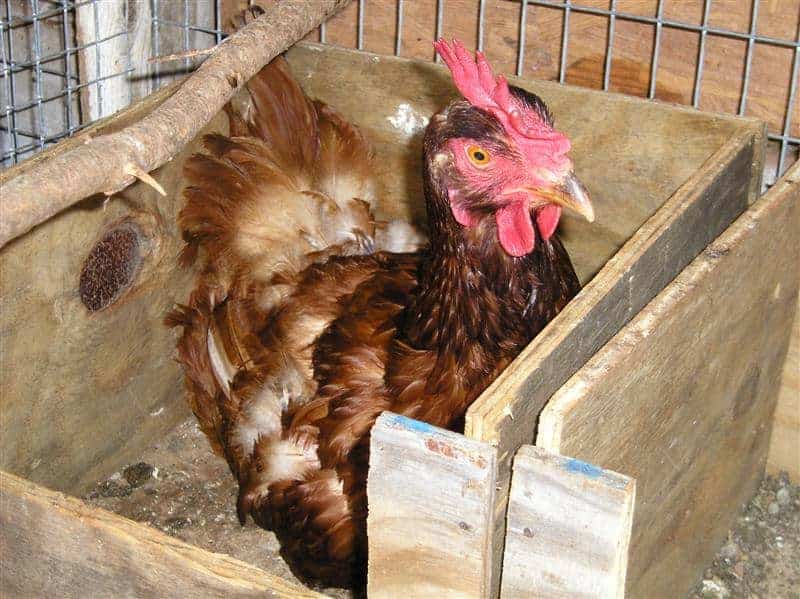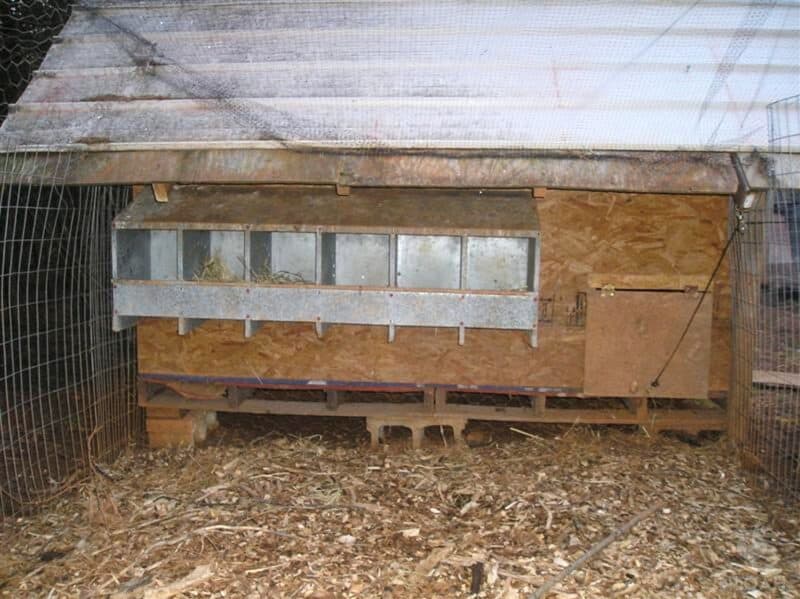Raising chickens for egg production is the number one reason to keep them for most folks. But, as beginning keepers will soon learn, managing egg production can be quite tricky! One of the first things you need to invest in for your flock is nesting boxes.

Nesting boxes encourage hens to lay repeatedly, more often, and in the same place, making egg collection easy. But, nesting box design and configuration are crucially important for success. Let’s start with the basics: how big should your nesting boxes be?
A standard nesting box good for most chickens will be about a foot wide, a foot deep, and a little over a foot tall, about 14 inches (in centimeters that’s 30 wide, 30 tall, and35 deep). Bantams can nest comfortably in a slightly smaller box, but bigger breeds will need a bigger one.
We can’t truly say that there is such a thing as a one-size-fits-all nesting box when it comes to our birds, but it’s real close! Only the largest or smallest cluckers will need a specialty box if you want them to reliably and safely lay eggs.
As you might imagine, there’s still more that you’ll want to know, so keep reading, and we’ll get right into it.

Bigger Breeds Need Bigger Boxes
It should be obvious, but it bears mentioning. If you have bigger chickens like Jersey Giants, Brahmas, Leghorns, or other beefy birds that are tipping the scales at around 9 or 10 pounds and approaching 2 feet tall, invest in bigger nesting boxes.
These giants just need more room in order to lay an egg safely without risking damage, and if they feel a bit too claustrophobic, they might avoid using the box entirely.
They can also slow down production because this can contribute to climbing stress levels. This latter issue is especially likely if they’re already dealing with crowded or filthy conditions.
A good rule of thumb for your big breeds is to make the box just a little bit wider, about 14 inches. It can stay 14 inches tall and a foot deep.
Bantams Can Make Do With Smaller Boxes
As you might have guessed already, your smaller chicken breeds, and all bantams particularly, can get by with smaller boxes but not quite as small as you might be thinking.
Here, you only want to shrink the box a little bit in every dimension, aiming for one that’s about 10 inches wide and deep and a foot high.
It seems strange when some of these tiny, feisty birds might only weigh a couple of pounds at most. Curiously, most bantams tend to think they are bigger than they really are, and they need more room generally than their petite size suggests to the viewer.
Accordingly, if you try to get them to nest in something the size of a shoebox, they will almost certainly reject it even if they could fit and sit inside!

Should Nesting Boxes Be Bigger for Incubating Eggs?
Yes, definitely. Nesting boxes for collection are a little different from ones designed to allow broody hens to hatch a clutch of eggs.
That’s because chickens will need even more room to lay when the nest starts to fill up, and also more room to maneuver carefully so they avoid damaging or crushing the eggs. A good guideline is to increase the dimensions of the box by 2 inches in all directions, depending on the breed as outlined above.
Also, remember to put a raised lip on the front, measuring anywhere from 3 to 6 inches high depending on the size of the broody bird in question: this is vital for keeping both the nest bedding and the eggs themselves inside.
Many domestic chickens don’t have the highly developed maternal instincts of their wild ancestors, and accidents can happen! Do your best to prevent them.
Make Sure Your Nesting Boxes Have a Slanted Top
Another relevant tip concerning nesting box configuration: Make sure your boxes have a slanted top – especially if they are on or very close to the ground.
Why? Because sometimes hens will try to lay eggs on top of them if the interior doesn’t meet their ‘specs’ or if they start to get crowded!
Hens, or I should say most hens, tend to avoid laying on sloped surfaces because they instinctively know that their eggs will roll away. This sloped roof will encourage your girls to park it and drop the eggs right where you want them.
Do Nesting Boxes Need to Be Raised Off the Ground?
Yes, preferably. This helps keep them cleaner and your eggs a little bit safer.
Aim to raise them at least one and a half feet off the ground, and 2 feet is better. Also, make sure they are no less than 4 feet away from where your chickens roost when they tuck tail at night.
Generally, you can expect your nesting boxes to stay cleaner longer the higher they are off the ground, but you must also consider that larger breeds are more prone to injury if they have to jump down from high places.
Do consider the layout of your coop and the accessibility of the boxes before you commit to an installation.
Can Multiple Hens Share One Nesting Box?
Yes, they can, as surprising as that might be to our beginners! It’s hardly unusual to see more than one hen laying in the same nesting box, and even trying to lay in it at the same time!
If you are pressed for space or just have two or three hens, you might be able to get away with a single box. Consider, though, that an individual box is always, and I mean always, better to maximize egg production.
It boils down to the stress and comfort of your girls: everyone likes a little privacy and space to themselves during times like these!
Tom has lived and worked on farms and homesteads from the Carolinas to Kentucky and beyond. He is passionate about helping people prepare for tough times by embracing lifestyles of self-sufficiency.
